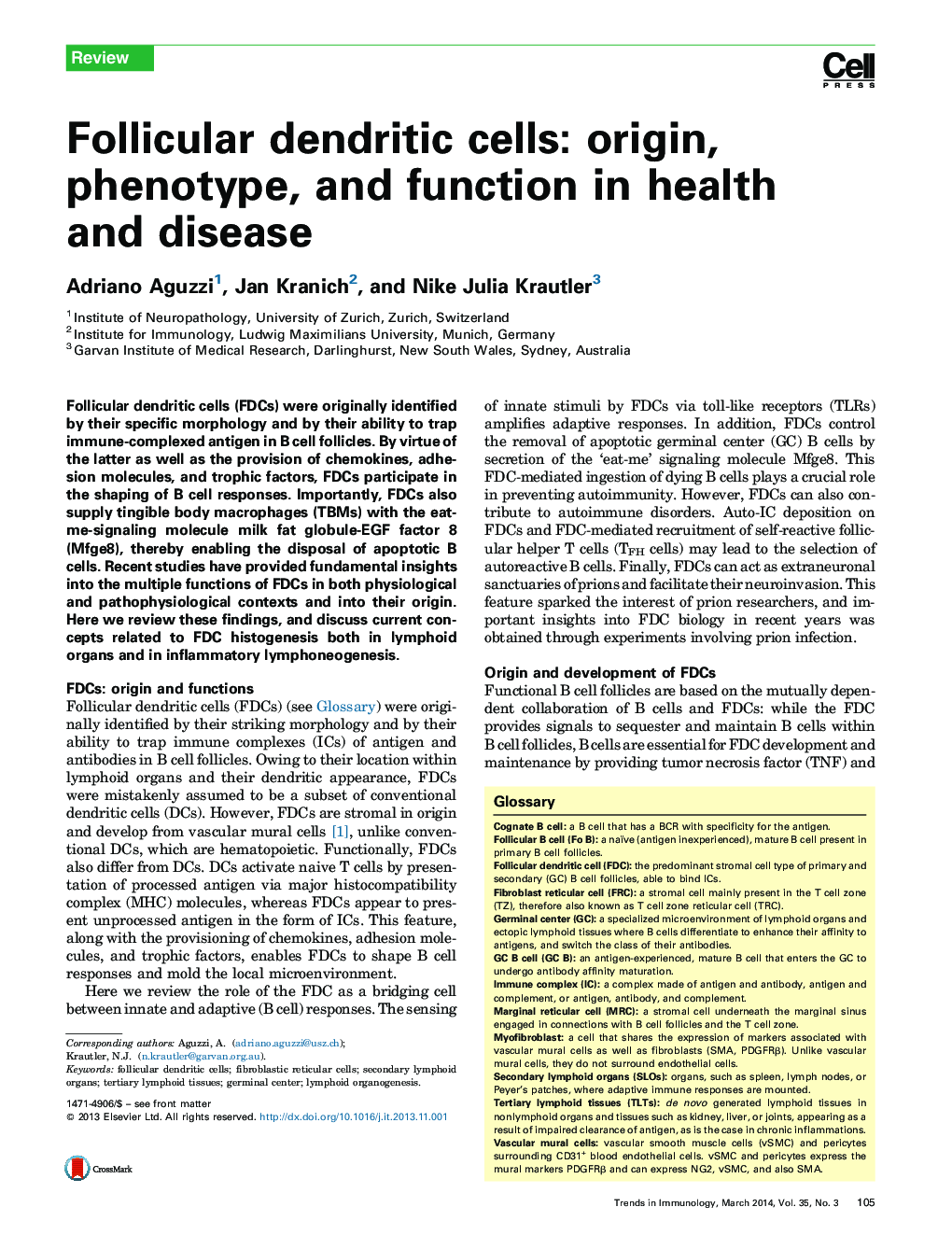| Article ID | Journal | Published Year | Pages | File Type |
|---|---|---|---|---|
| 4359730 | Trends in Immunology | 2014 | 9 Pages |
•FDCs, FRCs, and MRCs arise from a common and ubiquitous precursor.•FDCs enable GC responses via antigen, chemokines, and survival factors.•FDCs control the removal of apoptotic GC B cells, preventing autoimmunity.•Presentation of autoantigens by FDCs contributes to autoimmunity.
Follicular dendritic cells (FDCs) were originally identified by their specific morphology and by their ability to trap immune-complexed antigen in B cell follicles. By virtue of the latter as well as the provision of chemokines, adhesion molecules, and trophic factors, FDCs participate in the shaping of B cell responses. Importantly, FDCs also supply tingible body macrophages (TBMs) with the eat-me-signaling molecule milk fat globule-EGF factor 8 (Mfge8), thereby enabling the disposal of apoptotic B cells. Recent studies have provided fundamental insights into the multiple functions of FDCs in both physiological and pathophysiological contexts and into their origin. Here we review these findings, and discuss current concepts related to FDC histogenesis both in lymphoid organs and in inflammatory lymphoneogenesis.
